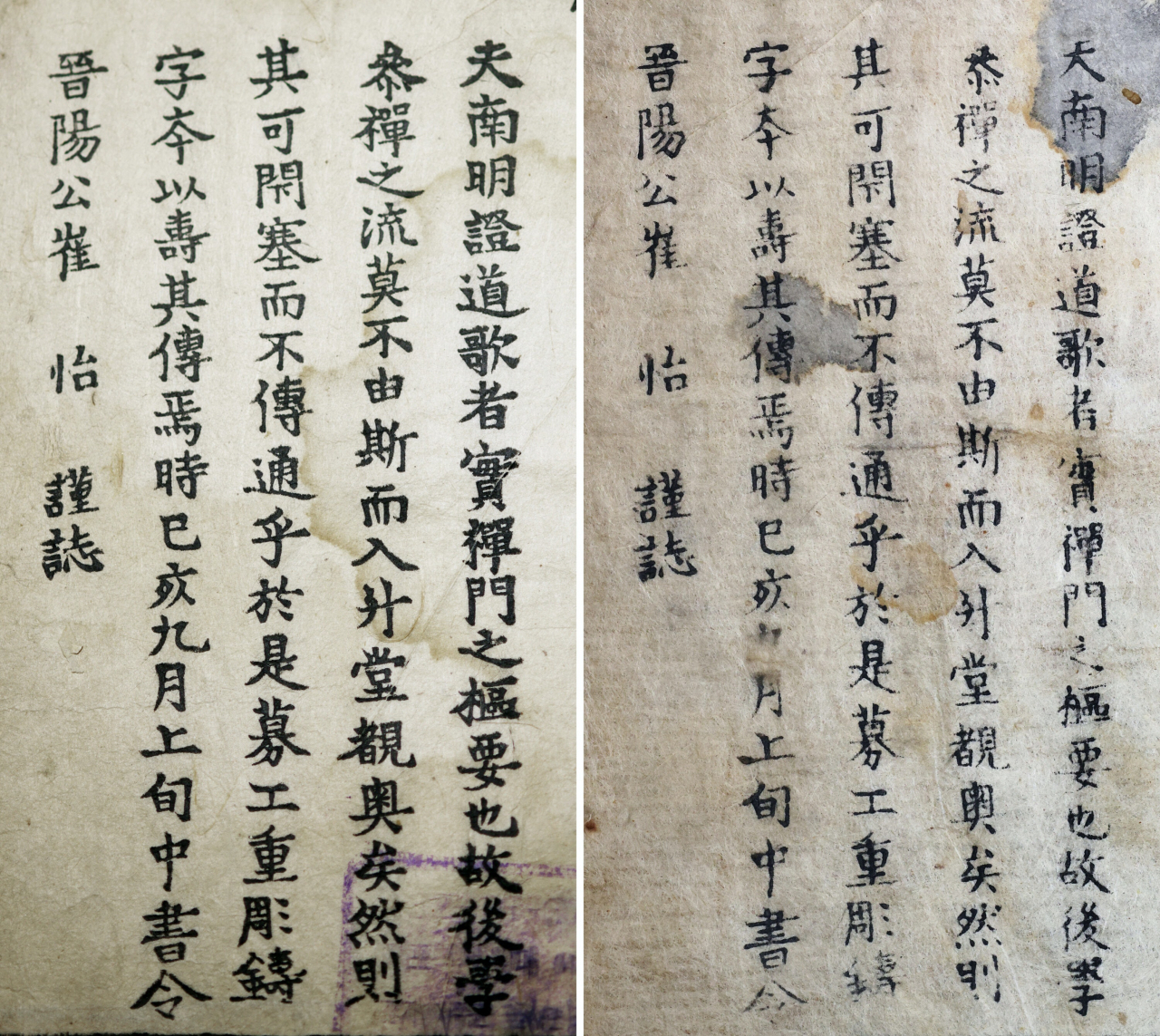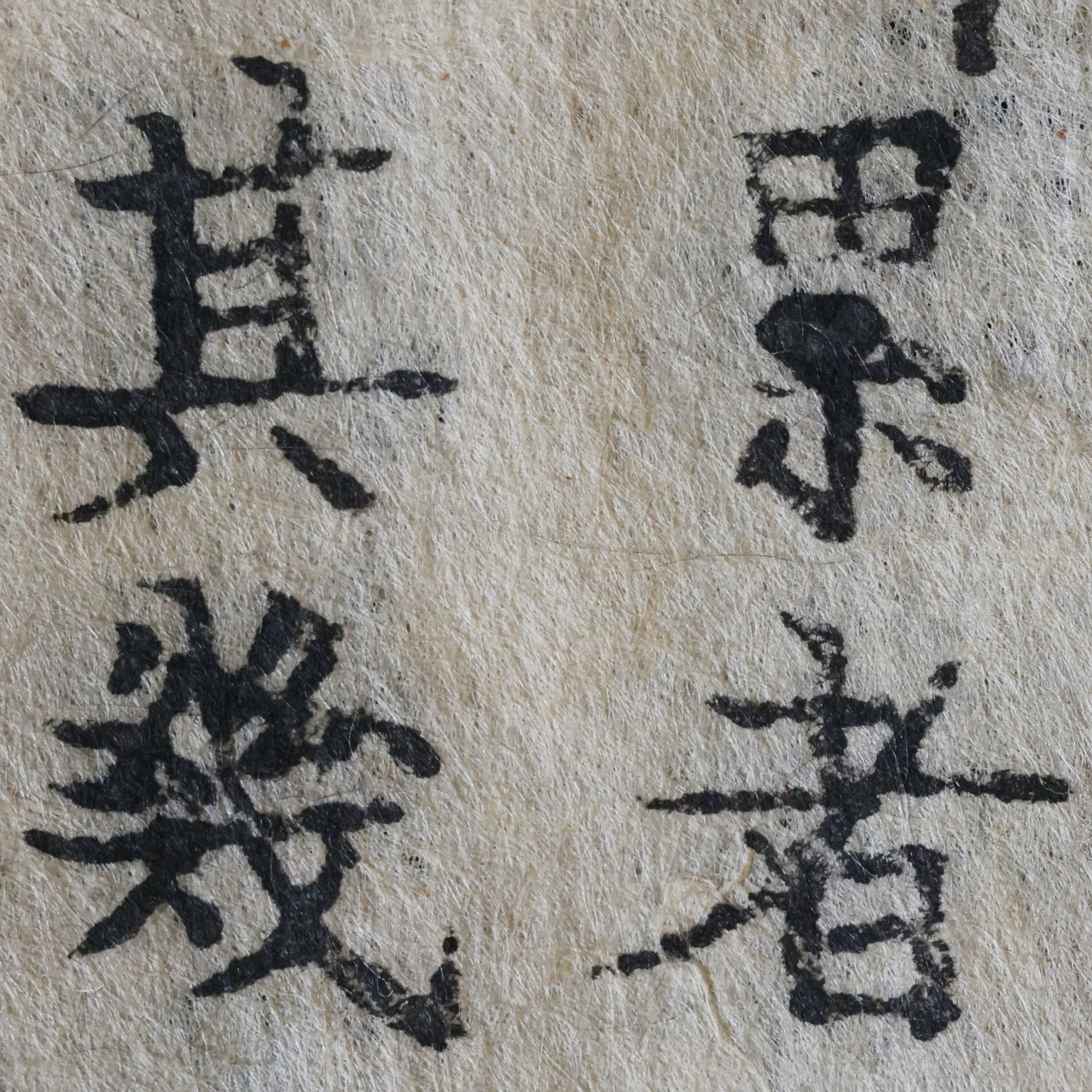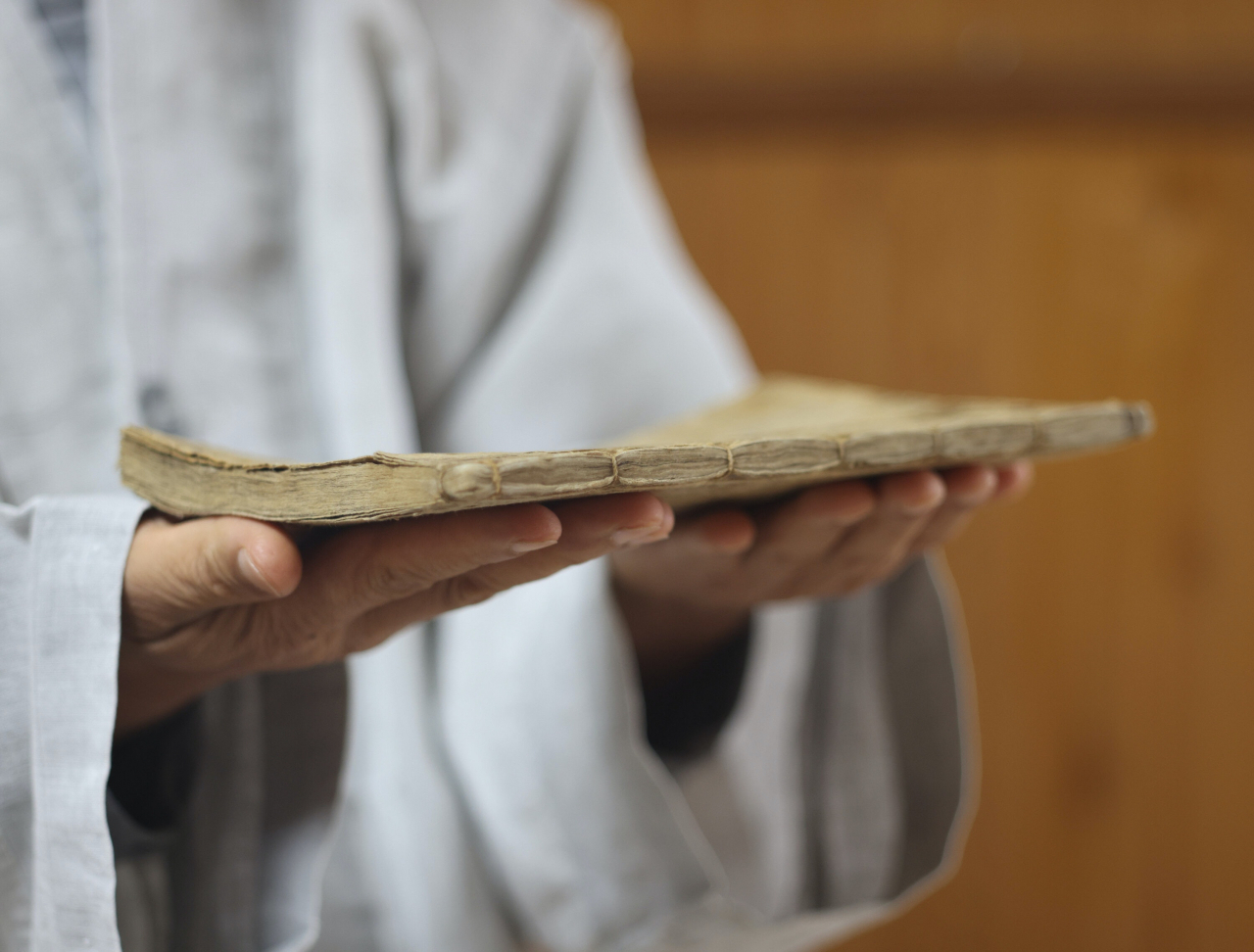[Visual History of Korea] Jeungdoga book may be oldest movable metal type print book
By Kim Hoo-ranPublished : Oct. 29, 2022 - 16:01

Early movable metal type printing from the period of the Goryeo Kingdom shows surface tension of the ink, which is a common tendency of liquid on metal surface at rest to shrink into circular liquid drops.
An 87-page book from 1239 is full of Hanja characters printed on hanji, traditional Korean paper made from mulberry tree bark, showing the characteristics of movable metal type printing.
Might was always right in the Goryeo Kingdom. The political elite in the 13th century were military leaders.
When the Mongols invaded Goryeo in 1231, military leaders of the Choi family protected the kingdom from annihilation by moving to the Ganghwado island fortress, which is now part of Incheon. The defenders delayed outright victory with periodic tactical concessions.
Unspeakable brutalities during the Mongol invasion of Goryeo, which went on for 40 years, turned Goryeo people to Buddhism, seeking protection from the divine power of Buddha.
When the first Tripitaka Koreana wooden printing blocks, which were carved in the early 12th century, were burned by the invading Mongols in 1232 at Buinsa, a Buddhist temple in Daegu, Goryeo people in 1237 began to carve a re-creation of the Tripitaka Koreana, resulting in a set of more than 81,000 wooden printing blocks. The project would take 15 years to complete.
No civilization accomplished documenting all known Buddhism thoughts as the Goryeo Empire did by creating the wooden carvings of more than 52 million Hanja characters in the Palman Daejanggyeong, which means "80,000 Tripitaka."
Meanwhile in 1239, during a time of war and a clash of empires, the Goryeo people achieved another milestone in history -- printing books with movable metal type.
In "Nammyeong Cheon Hwasangsong Jeungdoga," the 87-page "Song of Enlightenment With Commentaries by Buddhist Monk Nammyeong Cheon," printed with movable metal type in 1239, Choi Yi (1166-1249), the de facto leader of the Goryeo government in self-imposed exile on Ganghwado, just southwest of Goryeo's capital city Gaegyeong -- presently North Korea's Kaesong -- Choi articulated his objective for the publication in the last page in the Goryeo books:

"Nammyeong Jeungdoga is an important book that plays a pivotal role for those who practice Seon meditation. There is no one who does not reach the deep principles of meditation through this book. But the book is hard to find and not widely circulated. Therefore, in the first part of the 9th month in Kihae (1239) year, I have gathered metal type molding workers and had them carve metal types again, so that the book will be passed down for a long time. Choi Yi the Jinyang of the Choi clan."
When Goryeo's national resources were dedicated to making wooden printing blocks which had been perfected since the period of the Silla Kingdom, Choi turned to reusable movable metal types for the printing of the Jeungdoga book in 1239.
"Gonginbon version is the product of metal type printing at a time when woodblock carvers were deployed to carve the ‘Palmandaejanggyeong,’" said Park Sang-kuk, a former member of the Korea Cultural Heritage Committee.
While Korea is believed to have been ahead of the West in inventing movable metal printing type during the early 13th century, the benefits of Korean printings were limited to the royal palace and Buddhist temples.
The 1377 Jikji, until now the earliest extant book printed with movable metal type, is a product of Goryeo's movable metal type printing tradition.
Despite the Goryeo people's invention of movable metal type printing, the more ancient wooden block printing was the preferred and more efficient printing method, as movable metal type printing was imperfect with metal types misaligned during printing and the cost of casting metal type considerably higher than carving Hanja on wooden blocks.
Once carved, the wooden printing blocks could be reused indefinitely, while movable metal type printing required disassembling the printing plate after each use.
The wooden block printed version of the 1239 Jeungdoga book was first classified as a "Treasure" by the Korean government in 1984.
"I was the one with professor Cheon Hye-bong who designated the wooden block printed version of the Jeungdoga book as a Treasure in 1984," said Park, who retired from the Cultural Heritage Administration after 31 years of service. Ancient book researcher Cheon Hye-bong, who passed away in 2016 at the age of 90, reviewed a wooden block reprinted version of the original 1239 book when all of the four Jeungdoga books available to researchers were of wooden block print versions.
"I cannot blame the late researcher, but he misinterpreted the Hanja forward by Choi Yi as a wooden block reprint from the earlier movable metal type version, not the book printed with movable metal type," said Park.
The correct translation of Choi Yi's forward, according to professor Yun Jae-seug, a Hanja scholar at the department of history at Kyungpook National University, reads: “Therefore, I have gathered metal type molding workers and have them carve metal type again, so that the book will be pass down for a long time.”
But due to the power of the first impression by the late Cheon and the subsequent absence of critical thinking by researchers, 1239 has remained as the year the original metal type print book was reprinted in wooden block prints.

When a Jeungdoga book printed with movable metal type surfaced in Andong, North Gyeongsang Province, in 1988, it did not generate as much interest or national attention as Jikji, the 1377 book printed with movable metal type that is now located in France.
In June 2001 the late Park Dong-seup of Andong, looked up the Ven. Won-jin in Yangsan, South Gyeongsang Province, to trade his Jeungdoga book of 1239, the oldest book printed with movable metal type, for other Goryeo books in Won-jin's possession.
Park had been discouraged by researchers and the Culture Ministry not accepting his prized Jeungdoga book as a movable metal type printed book, one that predates the Jikji printed in 1377.
Won-jin studied the 87-page Hanja book for 11 years before he was able to convince the Culture Ministry to acknowledge the 1239 Gonginbon version of Jeungdoga as a state-designated Treasure in 2012.
In recent years, image comparison analysis of individual characters, lines of characters, pages and borderlines of all six versions of Jeungdoga books offered a clear result that the "Gonginbon version is the metal type print version while the rest are from wooden block prints which originally were carved in different times from the metal type version or wooden block print versions," said lead researcher Woo Sik Yoo, a semiconductor physicist in Palo Alto, California.
To celebrate Jikji and the early metal type printing tradition, a local government built the Cheongju Early Printing Museum at the site of the Heungdeoksa temple where the Jikji was printed in Cheongju, North Chungcheong Province, in 1992.
Movable metal type printing is one of mankind's great inventions, advancing the knowledge of everyone who newly gained access to printed books.
At around 1440, goldsmith Johannes Gutenberg successfully made the movable metal type printing press in Germany, which started the "Printing Revolution" in the West.
By Hyungwon Kang (hyungwonkang@gmail.com)
Korean American photojournalist and columnist Hyungwon Kang is currently documenting Korean history and culture in images and words for future generations. -- Ed.

















![[KH Explains] Hyundai's full hybrid edge to pay off amid slow transition to pure EVs](http://res.heraldm.com/phpwas/restmb_idxmake.php?idx=652&simg=/content/image/2024/04/18/20240418050645_0.jpg&u=20240418181020)

![[Today’s K-pop] Zico drops snippet of collaboration with Jennie](http://res.heraldm.com/phpwas/restmb_idxmake.php?idx=642&simg=/content/image/2024/04/18/20240418050702_0.jpg&u=)